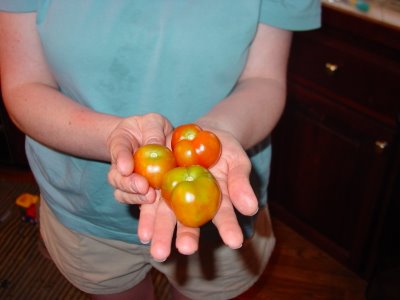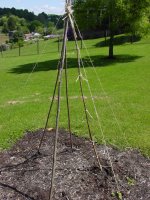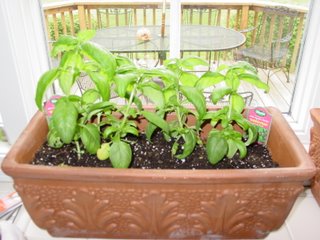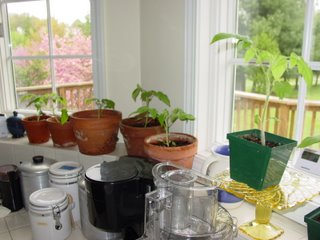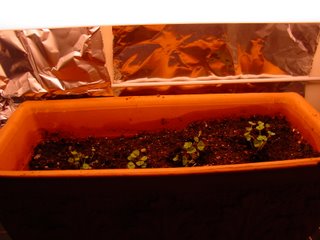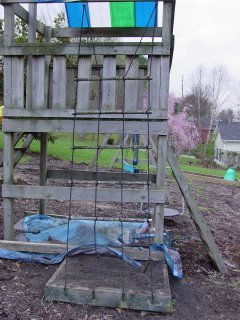
My other construction project over the Christmas break was to build a compost bin. I chose the style from Easy Composters You Can Build by Nick Noyes. Rather than paraphrase, I'll shamelessly copy the first two paragraphs:
New Zealand Compost Box
The New Zealand Compost Box was designed by Sir Albert Howard, a far-sighted British horticulturist who develope composting systems during the WWII era. A very precise man, Howard's methods and composting process were quite specific, as were his instructinos for making the following bin.
This box requires two ten-foot lengths of 2" x 2" wood and twelve eight-foot lengths of 1" x 6" wood. Cut the 2x2s into six 39" pieces, and cut the 1x6 wood into twenty-four 48" pieces. Assemble the piece as illustrated, taking care to leave a hel-inch space between each of the side boards to allow for aeration. Use galvanized screws (preferably) or nails to jlin the pieces. Teh uprights should be pushed into the ground approximately 3" (loosen the soil if necessary). The front boards (which will likely need to be trimmed a bit for an exact fit) slice in and out to make filling and emptying the box easier.
I chose to add a stablizing crossbar along the front. It will go in the backyard, near the garden just as soon as I can get someone to help me haul it back there. With all that lumber, it's pretty heavy. This is a good thing as I'm counting on it lasting several years.







